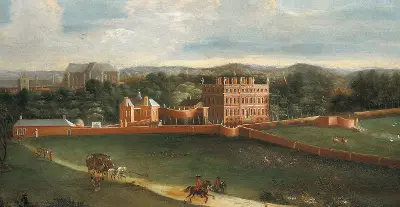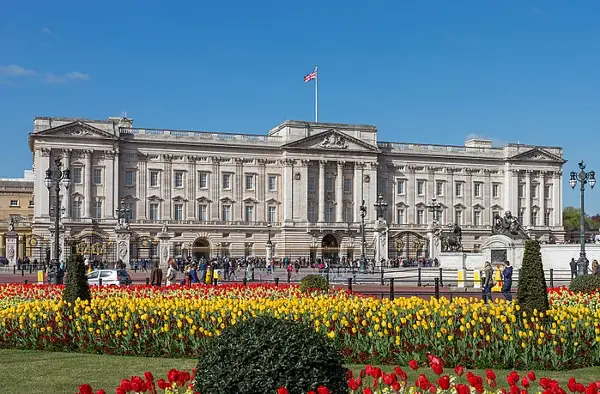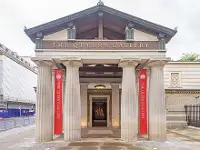|
Why Is It Called Buckingham Palace? Buckingham Palace gets its name from John Sheffield, the 1st Duke of Buckingham, who built one of the early versions of the famous palace in the early 18th Century. 
Sheffield, a war veteran, writer, and politician, moved into what had been the site of a stately home in 1703 and decided to redecorate. He did so, at a princely sum, called it Buckingham House, and then left it to future Dukes of Buckingham. (He was also the Duke of Normanby.) Before that, however, the land had been owned by some of England's most famous rulers, including Edward the Confessor, William the Conqueror, and King Henry VIII. Early homes on the property included Goring House and Arlington House. 
King George III took over Buckingham House and declared it a royal residence, one of several homes for the royal family. It came to be known as the Queen's House because George's queen, Charlotte, spent so much time there. He had, in fact, bought it as a private residence for her. The fourth King George wanted to expand Buckingham House into a royal palace and hired architect John Nash to do just that. Despite keeping most of the original house within the plans, he created a large budget overrun and was fired from the project in 1828, after three years on the job. George IV died in 1830 without seeing his royal palace dream come true. His successor, William IV, hired another architect, Edward Blore, to carry on the work. The king much preferred to live in Clarence House and, after a fire in 1834 destroyed the Houses of Parliament, served up Buckingham House as a replacement; Parliament refused. It was Queen Victoria in 1837 who first termed the place Buckingham Palace. Blore was still around in the 1840s, when Victoria's needs for more room for a nursery and guest rooms (not to mention the need for properly ventilating chimneys) became apparent, and expansion on Buckingham Palace began anew, overseen by Blore and his student James Pennethorne. One of the most recognizable features, the famous balcony on which the royal family Albert died in 1861, and Victoria left Buckingham Palace to live in Windsor Castle. The palace was somewhat neglected for a time, then King Edward VII and his wife, Queen Alexandra, set out redecorating at the turn of the 20th Century, adding the cream and gold color scheme that is so familiar to visitors today. The palace chapel was the victim of German bombs during World War II; the reconstruction placed the Queen's Gallery where the chapel had been, and this chapel, housing the Royal Collection, is open to the public.  Today, Buckingham Palace has 775 rooms, the largest private garden in London, and 880 members of staff to help with the upkeep of maintaining the royal residence, where the current monarch lives. Have a suggestion for this feature? Email Dave. |
Social Studies for Kids |




 traditionally greets crowds, was part of this expansion, the brainchild of Victoria's beloved husband, Prince Albert.
traditionally greets crowds, was part of this expansion, the brainchild of Victoria's beloved husband, Prince Albert.
